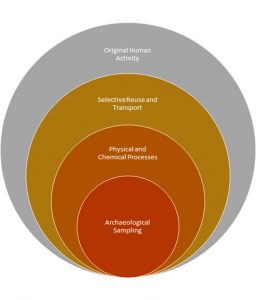Join SCAS for a talk by Tait Elder entitled “Comparing Regional Prehistoric Archaeological Sensitivity Models: What Are We Really Modeling?” The talk will be held on May 9, 2019, at 7:30 pm at the Santa Cruz Live Oak Grange Hall at 1900 17th Ave, Santa Cruz, CA 95062 (click here for Google Maps directions).
 Recent general archaeological sensitivity modeling efforts across three regions (Northern California, Southern California, and the Puget Sound of Washington State) have revealed clear regional differences in how prehistoric sites are distributed across the landscape. The differences between these regions appear to be the relative influence of geomorphology on site preservation and the spatial organization of sites around key resources. This presentation explores some of the attributes that are traditionally used to develop general archaeological sensitivity models, identify post-depositional and methodological factors that can influence how site distributions are interpreted and how they may vary by region, and considers approaches to weighing these attributes and factors in order to develop region-specific models.
Recent general archaeological sensitivity modeling efforts across three regions (Northern California, Southern California, and the Puget Sound of Washington State) have revealed clear regional differences in how prehistoric sites are distributed across the landscape. The differences between these regions appear to be the relative influence of geomorphology on site preservation and the spatial organization of sites around key resources. This presentation explores some of the attributes that are traditionally used to develop general archaeological sensitivity models, identify post-depositional and methodological factors that can influence how site distributions are interpreted and how they may vary by region, and considers approaches to weighing these attributes and factors in order to develop region-specific models.
Tait is a professional archaeologist with a background in geoarchaeology and archaeological sampling design. He received his undergraduate degree in Anthropology with a minor in geology from Western Washington University, and his Master of Arts degree in Anthropology from Portland State University. Tait has designed and performed archaeological studies in California, Idaho, Oregon, and Washington State, and oversees a team of 20 full time cultural resources specialists across the Bay Area, Oregon, and Washington. His research interests include exploring the ways in which geomorphic forces can result in the selective preservation and exposure of archaeological resources; analyzing the contents of archaeological sites to reconstruct the pre-development distributions of animal populations; and the consideration of how field method selection can impact the interpretation of prehistoric land use and subsistence.



